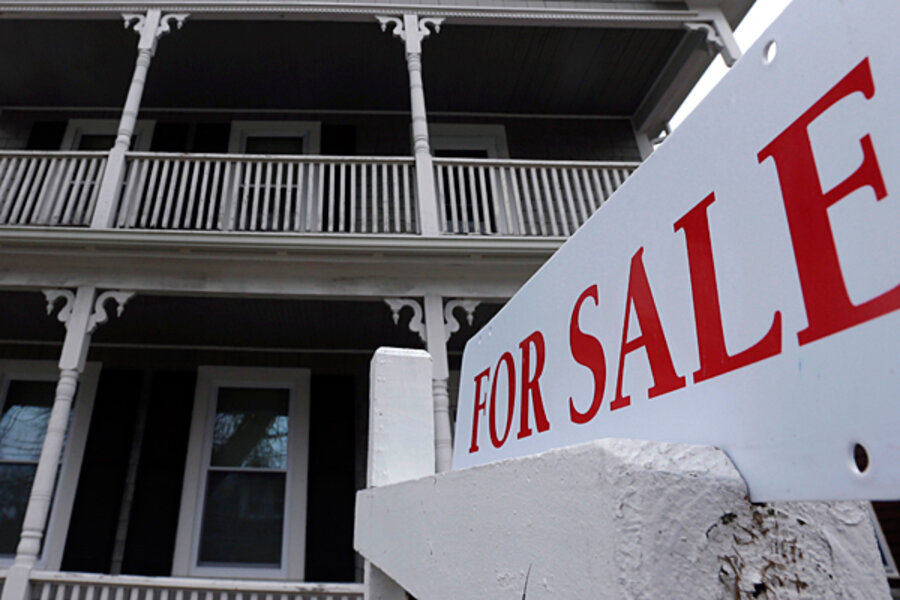Home prices up 12 percent as investors bet on real estate
Loading...
| Washington
Prices of existing homes in the United States rose 12 percent in March from the same month last year, as the real estate market continues to bounce back, providing much-needed help to the nation’s economy.
A key factor in housing’s recovery is strong demand from major corporate investors, who see profit in the combination of still-depressed real estate prices, near-record-low interest rates, and strong demand for rental housing. The Washington Post reported Monday that institutional investors are bidding on hundreds of homes each day and account for as much as 70 percent of sales in some Florida markets.
The National Association of Realtors says that the median price of homes sold in March, buoyed by strong demand, was $184,300, 11.8 percent higher than in March 2012. The March price increase is the biggest since November 2005.
The pace of sales activity in March actually slipped a bit, declining 0.6 percent on a seasonally adjusted basis to 4.92 million. But the rate of sales in March was still 10.3 percent faster than March 2012. Existing home sales have now been above year-earlier levels for 21 consecutive months.
In a statement, National Association of Realtors chief economist Lawrence Yun said there is more demand than supply in the housing market.
"Buyer traffic is 25 percent above a year ago when we were already seeing notable gains in shopping activity," he said. "In the same time frame housing inventories have trended much lower, which is continuing to pressure home prices."
Previous housing recoveries have been led by families and individuals looking to put a roof over their heads, but, as The Wall Street Journal recently noted, this recovery has been different.
“Investors – including some big Wall Street players – are leading the way,” the paper wrote. The Journal added that the phenomenon of strong investor participation is not without risk. “Their role is noteworthy given that flippers and speculators were blamed for helping to inflate the housing bubble of the past decade."
It is difficult to precisely measure the role of corporate investors. One proxy is those who buy homes in cash. The latest figures from the Realtors Association showed that all-cash sales of existing homes in March were 30 percent of transactions, down from 32 percent in February. By comparison, DataQuick MDA, a real estate research firm, told the Post that absentee buyers accounted for 31.4 percent of recent southern California sales – versus an average of less than 17 percent between 2000 and 2010.
Last year, investor Warren Buffett told CNBC: “If I had a way of buying a couple hundred thousand single-family homes I would load up on them. It is a very attractive asset class right now. I could buy them at distressed prices and find renters.”
Major investors have taken his advice. Blackstone has acquired a portfolio of 20,000 rental homes worth $3 billion, the firm told The Washington Post. Colony Capital told the paper it has spent more than $1 billion on 8,000 homes in seven states.







